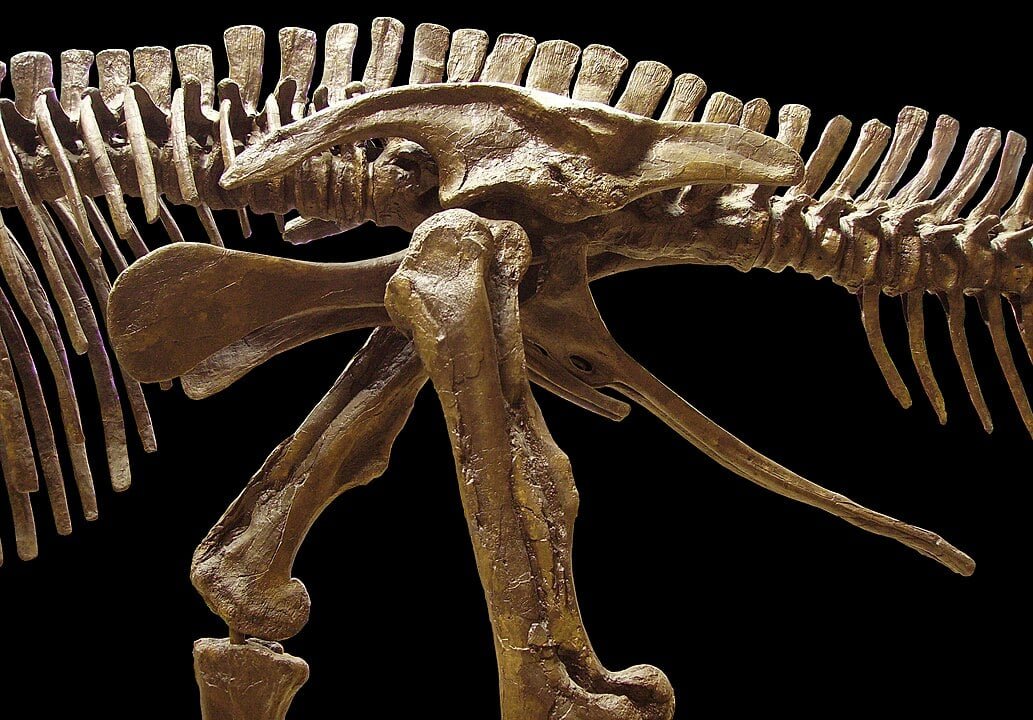
Scientists working in Wyoming’s badlands have uncovered two rare fossilized “mummies” of hoofed Edmontosaurus, a large duckbilled dinosaur. The finds preserve the animals’ bodies with exceptional detail and reveal an unexpected feature: hooves. No dinosaur has ever been shown to possess hooves before.
New clues about how dinosaurs moved
Researchers examined the preserved skin and limb structure and found that Edmontosaurus had hoof-like coverings on its toes. This suggests the dinosaur was adapted for efficient movement over solid ground, perhaps even capable of running. The discovery rewrites a major part of dinosaur anatomy and locomotion.
The fossils date to about 66 million years ago, near the end of the Cretaceous Period. One individual was a young adult about 40 feet long. The second was a two-year-old juvenile around half that size. Their outer shapes survived thanks to a thin coating of clay that molded to the skin after death, capturing the animal’s natural form.
A rare look at the full body of Edmontosaurus
University of Chicago paleontologist Paul Sereno said the fossils show the full outline of the dinosaur in life — a rare achievement in paleontology. He explained that these “mummies” are not like Egyptian ones. No DNA or internal tissues remain. The clay simply formed a natural casing over the bodies, preserving the outer surface like a mask.
Edmontosaurus lived alongside Tyrannosaurus, Triceratops, and Ankylosaurus in western North America. Sereno described it as the most abundant dinosaur in its environment, filling a role similar to modern grazing animals. Bite marks on other remains show it was likely a frequent meal for T. rex.
My art for Paul C. Sereno et al., “Duck-billed dinosaur fleshy midline and hooves reveal terrestrial clay-template ‘mummification’,” published in Science #edmontosaurus pic.twitter.com/7CeCUarwWg
— Dani Navarro Paleoart (@playerDNG) October 23, 2025
Hooves evolved in mammals such as horses millions of years later. Edmontosaurus is now the earliest known land vertebrate to evolve them. The trait demonstrates convergent evolution — unrelated animals developing similar features to survive in similar habitats.
Skin detail and new surprises from the “mummy zone”
The dinosaurs had a fleshy midline crest that turned into a row of tail spikes. Their skin bore fine pebble-like scales like those of a lizard. Scientists think both animals died in a drought. A sudden flash flood later buried them under clay, preserving their bodies with extraordinary clarity.
Researchers relocated the early 20th-century “mummy zone” using historical photos. New digs there uncovered more fossils, including Tyrannosaurus and Triceratops. One Tyrannosaurus fossil showed a skin surface without scales, suggesting it may have been feathered.


